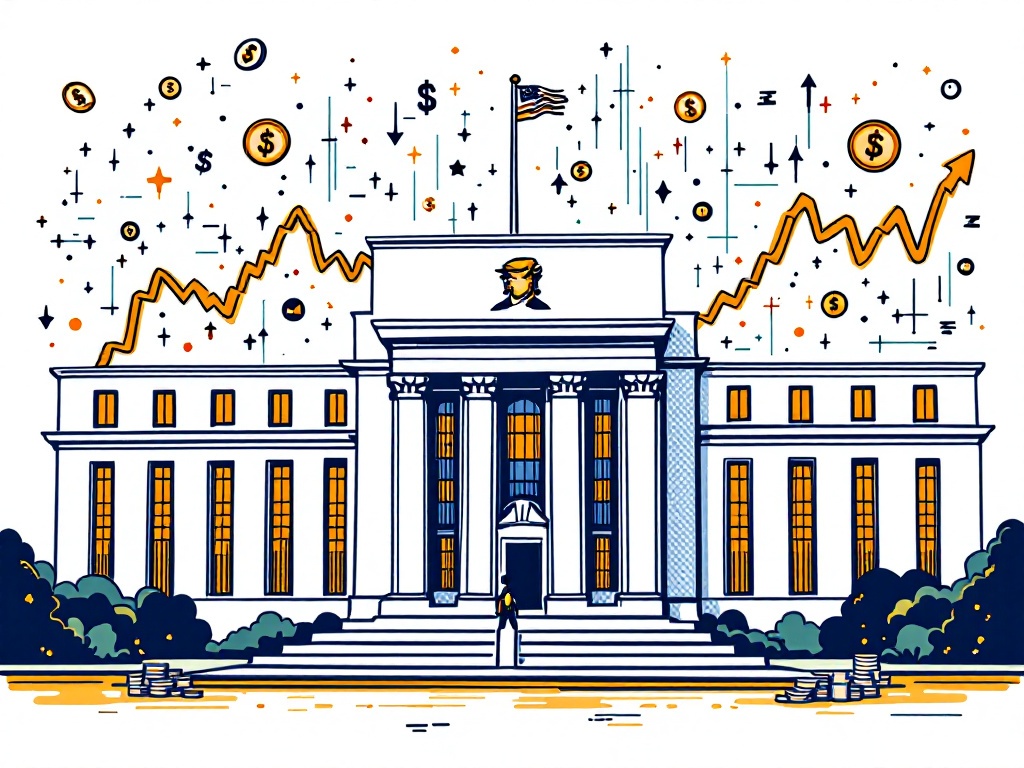Federal Reserve Highlights Inflation Concerns Amid Trump's Policy Impact

Washington D.C., Thursday, 9 January 2025.
Minutes from the December 2024 Fed meeting reveal concerns about inflation due to Trump’s policies, potentially affecting future interest rate decisions.
Key Rate Decision and Immediate Outlook
The Federal Reserve’s latest meeting minutes, released on January 8, 2025, show that the central bank lowered its benchmark interest rate to 4.25%-4.5% in December 2024 [1][2]. In a significant shift from previous projections, the Federal Open Market Committee (FOMC) has reduced its forecast for rate cuts in 2025 from four to just two quarter-point reductions [1]. Market indicators currently suggest a nearly 100% probability that rates will remain unchanged at the upcoming January 28-29, 2025 meeting [1].
Inflation Concerns and Trump’s Policy Impact
The minutes reveal widespread concern among Fed officials about inflation risks, with ‘almost all participants’ noting increased upside risks to the inflation outlook [1][5]. These concerns are particularly focused on the potential impact of President-elect Trump’s proposed policies, especially regarding trade and immigration [6]. Current inflation stands at 2.4% for core measures and 2.8% including food and energy, significantly above the Fed’s 2% target [1]. Economic analysts at Goldman Sachs estimate that Trump’s proposed tariff policies could potentially add 0.5 percentage points to inflation in 2025 [2].
Market Response and Economic Indicators
Financial markets have shown mixed reactions to the Fed’s cautious stance. On January 8, 2025, the Dow Jones Industrial Average gained 106.84 points (0.3%) to close at 42,635.20, while the S&P 500 rose by 9.2 points [3]. Treasury yields have responded significantly, with the 30-year bond yield climbing to 4.931%, its highest level since November 2024 [3]. Fed Chair Jerome Powell has emphasized a careful approach to monetary policy, comparing it to ‘driving on a foggy night or walking into a dark room full of furniture’ [1][6].
Future Policy Direction
The Fed’s long-term outlook suggests a gradual approach to monetary easing, with officials not expecting inflation to return to the 2% target until 2027 [1]. The central bank’s ‘dot plot’ indicates potential rate cuts in 2026, with the long-run federal funds rate expected to settle around 3% [1]. Fed Governor Christopher Waller, while supporting rate reductions in 2025, has expressed skepticism about the inflation impact of Trump’s proposed universal tariffs [2]. The committee emphasizes that future policy decisions will be data-dependent rather than following a preset course [8].
Sources
- www.cnbc.com
- www.aljazeera.com
- www.marketwatch.com
- tradingeconomics.com
- www.washingtonpost.com
- www.barrons.com